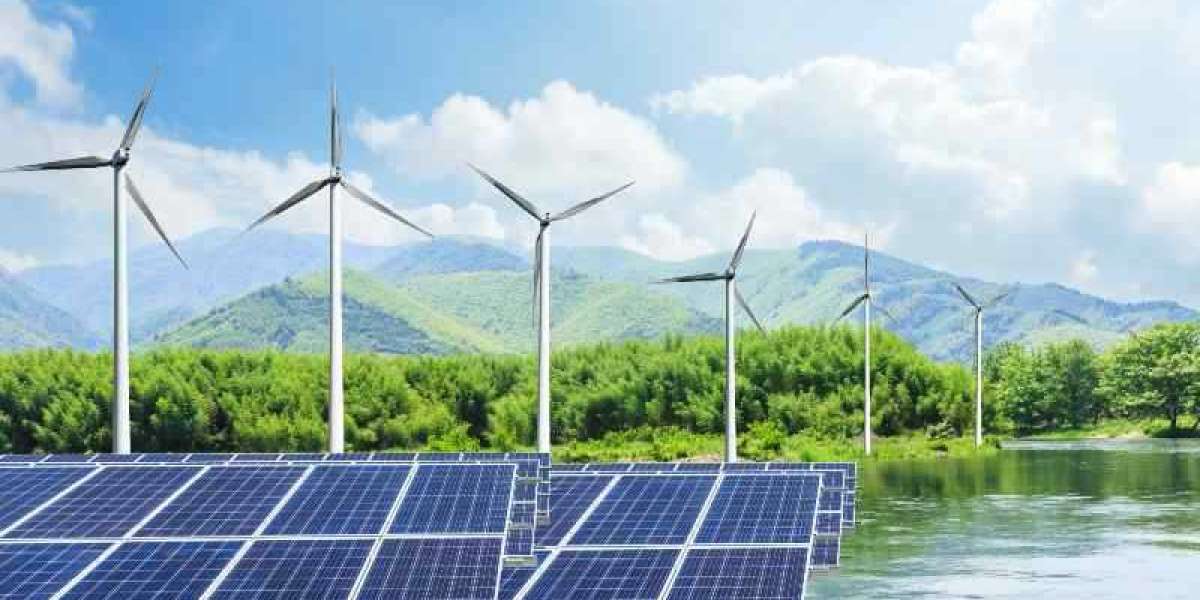In today's world, the call for sustainable and environmentally friendly solutions has never been louder. As the effects of climate change become increasingly evident, there is an urgent need to transition towards a green energy economy. This transition is not just a trend; it's a necessity for our planet's survival and the well-being of future generations. But what does it mean to drive change towards a green energy economy, and how can we make it happen? In this post, we'll delve into the importance of this transition, the challenges we face, and the green energy solutions that can pave the way forward.
Understanding the Need for Change
The traditional energy sources that power our world, such as fossil fuels like coal, oil, and natural gas, have been the backbone of industrialization and development for centuries. However, these energy sources come at a significant cost to our environment. The burning of fossil fuels releases greenhouse gasses like carbon dioxide and methane, which are major contributors to global warming and climate change.
Moreover, the extraction and production of fossil fuels often lead to environmental degradation, habitat destruction, and pollution of our air and water. These negative impacts not only harm our planet but also pose serious health risks to humans and wildlife alike.
Given these challenges, it's clear that relying on fossil fuels is unsustainable in the long run. We need to shift towards cleaner, renewable energy sources that can meet our energy needs without harming the environment. This is where the transition towards a green energy economy comes into play.
Challenges on the Path to Green Energy
While the idea of transitioning to green energy sounds promising, it's not without its challenges. One of the major obstacles is the existing infrastructure that is heavily reliant on fossil fuels. Our power plants, transportation systems, and industries are largely designed to run on non-renewable energy sources, making it difficult to switch to green energy overnight.
Additionally, there is a misconception that green energy solutions are not as reliable or cost-effective as traditional energy sources. While it's true that renewable energy technologies like solar and wind power have faced challenges in the past, advancements in technology and falling costs have made them increasingly competitive.
Another challenge is the lack of political will and support for green energy initiatives. In many parts of the world, governments continue to subsidize fossil fuel industries while providing little support for renewable energy development. This makes it harder for green energy solutions to gain traction and compete in the market.
Paving the Way Forward with Green Energy Solutions
Despite these challenges, there is reason for optimism. The transition towards a green energy economy is not only possible but also beneficial in many ways. Here are some green energy solutions that can help pave the way forward:
Solar Power
Solar energy is one of the most abundant and widely available renewable energy sources. By harnessing the power of the sun, we can generate electricity without producing any greenhouse gas emissions. Solar panels can be installed on rooftops, in open fields, or even integrated into building designs, making it a versatile and scalable green energy solution.
Wind Power
Wind energy is another promising green energy solution that has seen rapid growth in recent years. Wind turbines can be installed on land or offshore to capture the kinetic energy of the wind and convert it into electricity. With advancements in turbine technology, wind power has become more efficient and cost-effective, making it a viable alternative to fossil fuels.
Energy Storage
One of the challenges with renewable energy sources like solar and wind power is their intermittency. Energy storage technologies, such as batteries and pumped hydro storage, can help address this issue by storing excess energy generated during periods of high production and releasing it when needed. This not only helps stabilize the grid but also makes renewable energy more reliable and dispatchable.
Electric Vehicles
Transportation is one of the largest contributors to greenhouse gas emissions. Electric vehicles (EVs) offer a green energy solution by replacing traditional gasoline-powered cars with vehicles that run on electricity. As the demand for EVs continues to grow, it will drive the need for clean and renewable energy sources to power them, further accelerating the transition towards a green energy economy.
Energy Efficiency
Improving energy efficiency is another crucial aspect of transitioning to a green energy economy. By reducing energy waste in buildings, appliances, and industrial processes, we can decrease our overall energy consumption and reliance on fossil fuels. Energy-efficient technologies and practices can help us achieve this goal while saving money and reducing our carbon footprint.
Conclusion
The transition towards a green energy economy is not just a choice; it's a necessity for the health of our planet and future generations. While there are challenges to overcome, the green energy solutions outlined above show that it's possible to drive change and make a positive impact.
As individuals, communities, businesses, and governments, we all have a role to play in this transition. By supporting and investing in green energy initiatives, advocating for policies that promote renewable energy development, and adopting sustainable practices in our daily lives, we can all contribute to building a cleaner, greener, and more sustainable future.
Frequently Asked Questions
Are Green Energy Solutions More Expensive Than Conventional Energy Sources?
While green energy solutions may have higher upfront costs, they offer long-term savings and benefits. As technology advances and economies of scale are achieved, the cost of renewable energy continues to decline. Moreover, the environmental and health-related costs associated with fossil fuels are often not reflected in their market prices, making green energy solutions a more cost-effective and sustainable choice in the long run.
Can Renewable Energy Sources Provide Reliable Power Supply?
Yes, renewable energy sources can provide reliable power supply when integrated with energy storage systems, smart grid technologies, and demand-side management strategies. Advances in energy storage technologies, such as batteries and pumped hydro storage, enable renewable energy to be stored and dispatched as needed, ensuring a stable and resilient electricity grid.
What Challenges Do We Face In Transitioning To A Green Energy Economy?
Transitioning to a green energy economy requires overcoming various challenges, including policy and regulatory barriers, financing constraints, and resistance to change from stakeholders in the fossil fuel industry. Additionally, integrating renewable energy into existing infrastructure and addressing grid stability issues are important considerations. However, with concerted efforts and collaboration among governments, businesses, and communities, these challenges can be addressed effectively.



